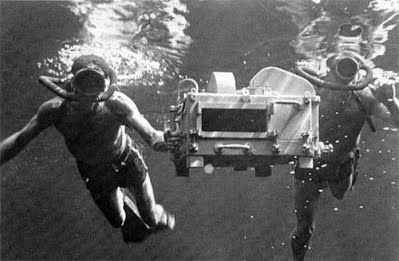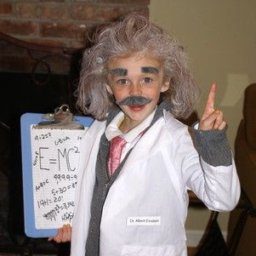For some of us, sitting down with a big bucket of popcorn in an old fashioned theater with a classic black and white movie on the big screen holds a level of escape and charm that today’s blockbusters simply cannot match. After all, the pace of life was slower back then and so movies tended to focus more on characters and interactions instead of spectacle. Not to say that spectacle is bad! I love a good explosion as much as the next guy, but there is something magical about watching two actors, with minimal sets and costumes, bring a completely new world to life. That’s especially true as I watch classic movie monster films.
This month, as we celebrate all things spooky and scary, I thought it appropriate to take a stroll through some of the classic movie monsters of days gone by and be reminded that you don’t have to be flashy to be scary. And besides, the science that went into the movie magic of those long ago times is something worth exploring because they set the stage for today’s creepy feats of technical wizardry.
“Dracula” (1931)
This classic scene is played by the incomparable Bela Lugosi as Dracula and the equally fantastic Edward Van Sloan as the vampire hunter Van Helsing. Most of us know the story of Bela Lugosi’s fascination with Dracula and his equally bizarre behavior surrounding the role, but as you watch this scene, you can’t help but be drawn in to Lugosi’s magnetic performance and how, just with his eyes, he communicates so much power and force. Equally amazing is the amount of reactions on Van Sloan’s face—from fear, to dread, to defiance, it’s all written in black and white.
But beyond the actors, take a look at the make-up on Dracula. Black and white film usually made the actors look washed out (it’s one of the reasons monster movies were made early on—they could be perceived as believable given the limitations of the format) but even with that extra boost, Lugosi looks even more pristine and white during the film because make-up artists of the day understood how to highlight certain tones that would show up well in the color spectrum of the film. It’s simple, but that, along with Lugosi’s all-in performance, made Dracula one of the most popular and enduring movie monster films ever made.
“Frankenstein” (1931)
A good year for movie monsters, Frankenstein was released after Dracula to near universal acclaim. In addition to the wonderful performances of Colin Clive as Dr. Frankenstein and of course, the incomparable Boris Karloff as Frankenstein’s monster, the movie was a watershed of sorts for special effects.
If you watch closely, you can see how the technical artists of the day created the madness of Frankenstein’s lab. Foley artists used something called a thunder sheet, which you can buy on amazon now for about $10. They’re made primarily of bronze and welded to be thin and flexible. People behind the camera would shake the sheet to create the effect of thunder. The lightning of course was simply done by turning the lights on and off within the sound stage. But to add a touch of madness, the producers used several Jacob’s ladders (which you can see on display in our Spooky Science exhibit) to add that crackling noise which has become so synonymous with crazy laboratories. It’s essentially a high voltage electrical arc and shows how electricity can travel between two wires.
“Creature from the Black Lagoon” (1954)
This particular clip, filmed entirely underwater in 1954, was something of a technical marvel. At the time, Hollywood studios used rather large camera rigs to do all of their shooting because the quality of the image was so much better. But, to film a scene like the one above underwater using that giant rig would have been next to impossible. So Clifford Stine, the film’s cinematographer, devised a water tight device that would fit two smaller, Arriflex cameras that could be manned by a pair of divers. The smaller cameras were thought to have poor quality, but by combining two cameras in the device, Stine gave himself an ability to cut to whatever one had the best shot and still made the image as good or better, in some cases, than the big rigs of the day. Take a look at this:
The two camera underwater technique was used for years before technology advanced to the point where smaller, waterproof cameras were invented. However, this creative and innovative thinker gave those of us who love classic films, one of the best early underwater fight scenes ever. I mean, check out the costumes!
Tell us what you think in the comments! What are your favorite classic movie monsters? What will you be watching this Halloween?







